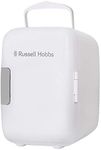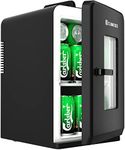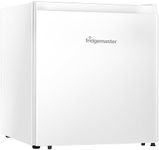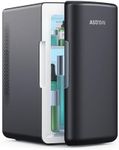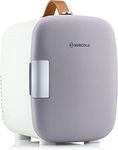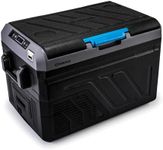Buying Guide for the Best Portable Fridges
Choosing the right portable fridge can make a big difference in your outdoor adventures, road trips, or even daily use. A portable fridge is designed to keep your food and drinks cold while you're on the go, and there are several key specifications to consider to ensure you get the best fit for your needs. Understanding these specs will help you make an informed decision and ensure your portable fridge meets your expectations.CapacityCapacity refers to the amount of space inside the fridge, usually measured in liters. This spec is important because it determines how much food and drink you can store. Portable fridges come in various sizes, from small units around 15 liters to larger ones exceeding 50 liters. If you need a fridge for short trips or to store snacks and drinks, a smaller capacity might be sufficient. For longer trips or if you need to store meals for multiple people, a larger capacity would be more appropriate.
Power SourceThe power source indicates how the fridge is powered, which can include options like 12V car batteries, 24V truck batteries, or 110V/240V AC outlets. This spec is crucial because it affects where and how you can use the fridge. If you plan to use the fridge primarily in your vehicle, a 12V option is essential. For versatility, look for models that can switch between different power sources, allowing you to use them both in your car and at home or in a campsite with an AC outlet.
Temperature RangeThe temperature range specifies the minimum and maximum temperatures the fridge can achieve. This is important for ensuring your food stays fresh and your drinks stay cold. Some portable fridges can also function as freezers, reaching temperatures below 0°C. If you need to store frozen items, look for a fridge with a wider temperature range. For general cooling needs, a fridge that maintains temperatures between 0°C and 10°C should suffice.
Energy EfficiencyEnergy efficiency refers to how much power the fridge consumes while operating. This spec is important for conserving battery life and reducing energy costs. Portable fridges with higher energy efficiency will use less power, which is beneficial for long trips or when using limited power sources like car batteries. Look for models with energy-saving features such as low power consumption modes or better insulation to ensure efficient operation.
PortabilityPortability encompasses the size, weight, and design features that make the fridge easy to transport. This spec is crucial for convenience, especially if you need to move the fridge frequently. Lightweight models with sturdy handles or wheels are easier to carry and maneuver. Consider how often you'll be moving the fridge and choose a model that balances capacity with ease of transport.
DurabilityDurability refers to the build quality and materials used in the fridge. This spec is important for ensuring the fridge can withstand the rigors of travel and outdoor use. Look for models made from high-quality materials like stainless steel or heavy-duty plastic, and check for features like reinforced corners or impact-resistant designs. If you plan to use the fridge in rugged environments, prioritize durability to ensure it lasts.
Additional FeaturesAdditional features can include things like digital displays, adjustable shelves, or USB charging ports. These specs are important for enhancing the usability and convenience of the fridge. Consider which features are most important to you based on your needs. For example, a digital display can help you monitor and adjust the temperature easily, while adjustable shelves can provide more flexible storage options.


